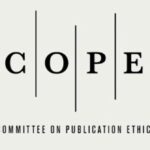Oketayo O. Oyedele¹✉, Dolapo S. Olaniyan¹, Justina A. Gabriel¹, Funmilayo H. Abejide², and Kolawole E. Adesina³
¹Department of Physics, Federal University of Oye-Ekiti,Oye-Ekiti, Ekiti State, Nigeria
²Department of Physics, Joseph Ayo Babalola University,Ikeji-Arakeji, Osun State, Nigeria
³Department of Medical Physics, Purdue University, West-Lafayette, Indiana, U.S.A
Received: May 29, 2023/ Revised: June 28, 2023/Accepted: June 29, 2023
(✉) Corresponding Author: Oyebamiji.oketayo@fuoye.edu.ng.
Abstract
In this study, the levels of five heavy metals were determined in soil and vegetable samples (bitter leaf, African spinach, and Indian-Malabar spinach) samples around the Lafarge cement factory in Ogun State, Nigeria using Flame Atomic Absorption Spectrometer (FAAS), Identical samples were also collected at a place where no anthropogenic activity took place. Transfer factor (TF) and risk analysis of three heavy metals: manganese (Mn), zinc (Zn), and iron (Fe) were obtained. Cd and Pb were below the detection limits. The levels of Fe, Mn, and Zn in the vegetables were above the WHO limits. Zinc had the highest accumulation with the transfer factor (TF) of 0.01 – 0.32 while Manganese had the lowest accumulation with TF of 0.0055 to 0.06. African Spinach had the highest TF (0.32 for Zn). This shows a higher level of metals in the soil. Target Hazard Quotient (THQ) was used to determine the potential risk of human exposure as the THQ values in the two species ranged between 0.97 and 283.20 for adults, 3.39 and 991.21 for children respectively. Significant differences exist (p < 0.05) between the levels of Mn, Zn, and Fe in the site-specific vegetable samples and the control. The vegetable samples from the site were not all that enriched in Mn and Zn (E.F = 0.032 – 0.93) despite their elevated levels in soil samples. The results of this research showed that the vegetables from this location were to some degree contaminated and might not be suitable for consumption.
Keywords: Risk Assessment, Soil and Vegetable Samples, FAAS, Transfer, and Metals.
References
Adeoye Abiodun Oluwatosin, Nasir Abdul-Salam (2019). Assessment of impact of Industrial Discharge on the Quality of Water around Lafarge Cement WAPCO, Ewekoro, Nigeria. Jewel Journal of Scientific research (JJSR) 4(1&2): 45-44. ISSN: 2384-6267.
Aderonke A. Okoya, Olabode I. Asubiojo, & Adeagbo A. Amusan. (2011). Trace element concentrations of soils of Ife-Ijesa area Southwestern Nigeria. Journal of Environmental Chemistry and Ecotoxicology, 3(7), 173–179.
Ali, M. P., Mustafizur, A. M. R., Rafiqul, I., Rowshon, A., Tasrina, R. C. (2015). Heavy metals contamination in vegetables and its growing soil, J. Environ. Anal. Chem. 2 3142 doi: 10.41722380-2391.1000142 (Page 6 of 6).
Anudu, O. & Faminu, G. (2020). How cement makers turned Nigeria’s big challenge into opportunity. Bus. Day. Available Online at Https://Businessday.Ng/ Real-Sector/Article/329478.Assessed27.06..
Anyanwu, B. O., Ezejiofor, A. N., Igweze, Z. N., Orisakwe, O. E. (2018). Heavy metal mixture exposure and effects in developing nations: an update, Toxics 6(4)65 PMID: 30400192, doi:10.3390/toxics6040065.
Asaduzzaman, M., Naidu, R. and Rahman, M. M. (2013). Consumption of arsenic and other elements from vegetables and drinking water from an arsenic-contaminated area of Bangladesh, J. Hazard Mater. 262 1056–1063.
Awofolu, O., Mbolekwa, Z., Mtshemla, V., & Fatoki, O. (2005). Levels of trace metals in water and sediment from Tyume River and its effects on an irrigated farmland. Water SA, 31(1). https://doi.org/10.4314/wsa.v31i1.5124
Ayodele, J. T. & Oluyomi. C. D. (2001). Grass contamination by trace metals from road traffic. Journal of Environmental Chemistry and Ecotoxicology, 3(3), 60–67.
Bhuiyan, M. A. H., Dampare, S. B. and Suruvi, N. I. (2011). Investigation of the possible sources of heavy metal contamination in lagoon and canal water in the tannery industrial area in Dhaka, Bangladesh, Environ. Monit. Assess 175, pp633–649.
Bjerregaard, P., Johansen, P., Pars, T. (2000). Lead, cadmium, mercury, and selenium intake by Greenlanders from local marine food, Sci. Total Environ. 245. 187–194.23.
Chauhan, G. and Chauhan, U. K. (2014). Human health risk assessment of heavy metals viadietary intake of vegetables grown in wastewater irrigated area of Rewa, India, Int. J. Sci. Res. Publ. 4(9). 2250-3153.
Chaurasia, S., Ahmad, I., Gupta, A. D. & Kumar, S. (2014). Assessment of air pollution emission from Cement Industries in Nimbahera, Rajasthan, India. International Journal of Current Microbiology and Applied Sciences, 3, 133-139.
Chen, Y. H., Lin, F. F., Luo, D. and Su, M. Y. G. (2006). Wang, Transfer characteristics of cadmium and lead from soil to the edible parts of six vegetable species in southeastern China, Environ. Pollut. 144 (1). 127–135.
Chen, Z., Zhu, B.-K., Jia, W.-F., Liang, J.-H., & Sun, G.-X. (2015). Can electrokinetic removal of metals from contaminated paddy soils be powered by microbial fuel cells? Environmental Technology & Innovation, 3, 63–67. https://doi.org/10.1016/j.eti.2015.02.003.
Chidambaram, A., Sundaramoorthy, P., Murugan, A., Sankar Ganesh, K. & Baskaran, L. (2009). Chromium Induced Cytotoxicity In Blackgram (Vigna Mungo L.). Iran. J. Environ. Health. Sci. Eng, 6(1), 17–22.
Chimezie, A., Kenneth, N., Olufunsho, A., Chinwe, N., Mohsen, A. & Herbert, Coker. (2011). Concentrations of heavy metals in some pharmaceutical effluents in Lagos, Nigeria. Journal of Environmental Chemistry and Ecotoxicology, 3(2), 25–31.
Davies, B. E. (1992). Trace metals in the environment: Retrospect and prospect. Biogeochemistry of Trace Metals.
Edogbo, B., Okolocha, E. and Maikai, B. (2020). Scientific African 7 (2020) e00281 9
European Union (EU) (2002). Heavy Metals in Wastes, European Commission on Environment (http://ec.europa.eu/environment/waste/studies/pdf/ heavymetals.report.pdf).
Food and Agriculture Organization/World Health Organization. (1993). Joint FAO/WHO Expert Committee on Food Additives. Evaluation of certain additives and contaminants, 1993 Forty-first report of the Joint FAO/WHO Expert Committee on Food Additives, WHO Technical Report Series No. 837.
Gbadebo, A. M. & Bankole, O. D. (2006). Analysis of Potentially Toxic Metals in Airborne Cement Dust Around Sagamu, Southwestern Nigeria. Journal of Applied Sciences, 7(1), 35–40. https://doi.org/10.3923/jas.2007.35.40
Gupta, S., & Sharma, S. (2013). Effect of Heavy Metal Present in Cement Dust on Soil and Plants of Nokha (Bikaner). Current World Environment Journal, 8(2), 299–303. https://doi.org/10.12944/CWE.8.2.16
Iqbal, M. Z., & Shafiq, M. (2001). Periodical Effect of Cement Dust Pollution on the Growth of Some Plant Species. Turkish Journal of Botany, 25(3), 1.
Kumar, S. S., Singh, N. A., Kumar, V., Sunisha, B., Preeti, S., Deepali, S. and Nath, S. R. (2008). Impact of dust emission on plant vegetation in the vicinity of cement plant Environment Engineering and Management Journal, 7(1), 31-35.
Li, N., Lia, M. B., McBrideb, H. and Xiaa, P. Zhuanga, (2009). Health risk from heavy metals via consumption of food crops in the vicinity of Dabaoshan mine, South China, Sci. Total Environ. 407(5). 1551–1561.
Majolagbe, A. O., Yusuf, K. A., Agunbiade, S. E., & Oguntan, V. T. (2018). Trace Metals Charaterisation of Environmental Media (Soils, Water and Tree Barks) Around Cement Manufacturing Area, Nigeria. Journal of Environmental Science and Pollution Research, 4(2), 271–274. https://doi.org/10.30799/jespr.123.18040203
Medina, S., Le Tertre, A., & Saklad, M. (2009). The Apheis project: Air Pollution and Health—A European Information System. Air Quality, Atmosphere & Health, 2(4), 185–198. https://doi.org/10.1007/s11869-009-0050-2.
Murugesan, M., Sivakumar, A., Jayanthi, N. & Manonmani, K. (2004). Effect of cement dust pollution of physiological and biochemical activities of certain plants, Pollut. Res. Pollution Research, 23(2), 375-378.
Nriagu. J. O. (1986). Chemistry of the river Niger, I: Major ions, II: Trace metals. Sci. Tot. Environ., 58, 81–92.
Ogunbileje, J. O., & akinosun, O. M. (2011). Biochemical and Haematological Profile in Nigerian Cement Factory Workers. Research Journal of Environmental Toxicology, 5(2), 133–140. https://doi.org/10.3923/rjet.2011.133.140.
Okieimen, F. E. & Wuana, R. A. (2011). Heavy Metals in Contaminated Soils: A Review of Sources, Chemistry, Risks Best Available Strategies for Remediation. Volume 2, (pp 20). doi:10.5402/2011/402647.
Olawusi-Peters, O., Akinola, J. O. & Jelili, A. O. (2017). Assessment of Heavy Metal Pollution in Water, Shrimps and Sediments of Some Selected Water Bodies in Ondo State. Journal of Researches in Agricultural Sciences, 5(2), 55–66.
Princewill, C. O., & Adanma, N. N. (2011). Metal concentration in soil and plants in abandoned cement factory. Int Conference on Biotechnology and Environment Management. IPCBEE, 18.
Rahmani, A. H., Almatroudi, A., Babiker, A. Y., Khan, A. A., & Alsahly, M. A. (2018). Effect of Exposure to Cement Dust among the Workers: An Evaluation of Health Related Complications. Open Access Macedonian Journal of Medical Sciences, 6(6), 1159–1162. https://doi.org/10.3889/oamjms.2018.233.
Ratti, C. (2001) Hot Air and Freeze-Drying of High-Value Foods: A Review. Food Engineering, 49, 311-319. https://doi.org/10.1016/S0260-8774(00)00228-4.
Tripathi, R., & Girjesh, K. (2010). Genetic loss through heavy metal induced chromosomal stickiness in Grass pea. Caryologia, 63(3), 223–228. https://doi.org/10.1080/00087114.2010.10589731.
World Health Organization (WHO) (1989). Evaluation of Certain Food Additives and Contaminants. Thirty third Report of the joint FAO/WHO expert committee on food additives. WHO technical report series (Geneva), 776, 26–27.
Yaşar, U., Ozyiğit II, & Serin M. (2010). Judas tree (Cercis siliquastrum L. subsp.siliquastrum) as a possible bio monitor for Cr, Fe and Ni in Istanbul (Turkey). . Rom Biotechnol Lett., 15(1), 4979–4989.
Zou, J. H., Wang, M., Jiang, W. S. & Liu, D. H. (2006). Effects Of Hexavalent Chromium (Vi) On Root Growth And Cell Division In Root Tip Cells Of Amaranthus Viridis L. Pak. J. Bot., 38(3), 673–681.
How to cite this article
Oyedele, O. O., Olaniyan, D. S., Gabriel, J. A., Abejide, F. H. and Adesina, K. E. (2023). Assessing the Environmental Risk of Heavy Metals in Surrounding Areas of Lafarge Cement Industry in Shagamu, Ogun State, Nigeria. Chemical and Environmental Science Archives, Vol. 3(2), 40-47. https://doi.org/10.47587/CESA.2023.3204
Licence Article Metadata
This work is licensed under a Creative Commons Attribution 4.0 International License.
![]()












